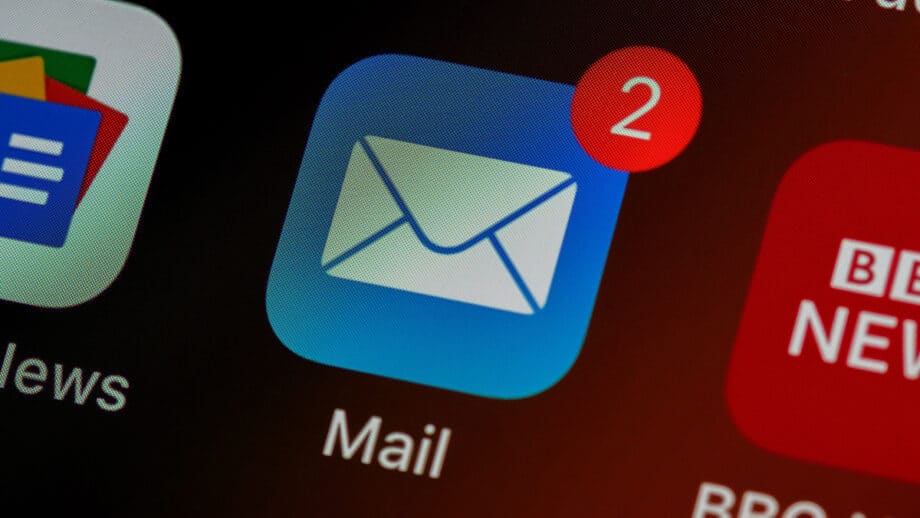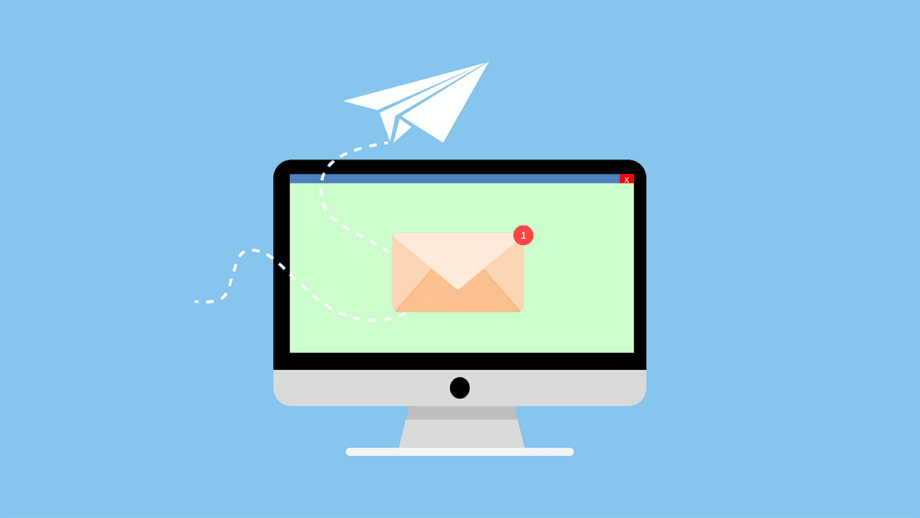Did you know how email marketers struggle so much in their work field? Email marketers go through a lot, especially in email deliverability! In simple words, they seem anxious about whether their emails are delivered to the primary inbox of the recipient or not. After all, what’s the point of email marketing if the sent emails reside in the junk or spam boxes of the recipient? But, is there something that can be done to undo the failures of email deliverability?
Well, there is so much that you can do to undo getting your emails landed on junk boxes. I have some expert opinions and a few crazy tips that will help you increase the rate of email deliverability or email warmup. Let’s follow in the footsteps of this guide to get ABC-to-XYZ insights.
1. Authentication of Your Emails
Have you ever seen an email marketer doing authentication of an email? I think your answer would definitely be “NO.” This is very important as some expert email marketers and email copywriting gurus told us to do. So…you need to understand that building a solid email infrastructure starts with authenticating your sender domain and messages.
You can think of it as verifying your identity before sending an email. Protocols like DKIM, SPF, and DMARC act as digital ID cards. These protocols confirm that your emails come from authorized sources. This authentication process helps recipients trust your emails. They start knowing they are legitimate and not spoofed. By setting up these protocols, you’ll strengthen your email infrastructure and protect your reputation as a sender.

Let’s see one more benefit of authentication of your emails below!
Actually, you are not just increasing the likelihood of reaching the inboxes of your subscribers after authenticating your emails, but also shielding your unique email domain from cyber threats. This is an added layer of security that helps you to prevent scammers from impersonating your brand. As a result, it reduces the risk of phishing and spoofing attacks that can directly damage your reputation and erode trust with your happy audience.
2. Try Double Opt-in Strategy
“When you invite subscribers into your circle with a double opt-in, you’re not just collecting emails – you’re building relationships based on mutual consent.”HubSpot
Let’s consider implementing a double opt-in process or strategy to make sure that your subscribers are genuinely interested in hearing from you. I have the complete process of how this strategy works.
When someone signs up, they receive a confirmation email with a verification link. Only when they click that link is their subscription confirmed. This extra step verifies that the email address is legitimate and that the subscriber is actively opting in to receive your emails.
What is the result? This strategy shows that higher engagement rates are directly proportional to the reduced risk of complaints or spam reports.
3. Regularly Monitoring the Sender’s Reputation
Now, what does it mean to monitor the sender’s reputation regularly? It means checking the sender’s score each and every day. Moreover, I must say that your sender’s reputation is the email equivalent of a credit score. In other words, it is a measure of how trustworthy you are in the eyes of Internet Service Providers (ISPs).
Remember, a good sender reputation is the pivot point for getting your emails delivered to your targeted email inboxes rather than being flagged red as spam. You can see it as a report card for your email-sending habits. So, let’s see how you can regularly monitor your email sender’s reputation.

I’m going to share a few parameters below. These key factors can help in identifying areas for improvement and making cool decisions to optimize your email campaigns:
Bounce Rate
Bounce rate is a crucial metric that shows how many emails are essentially “bouncing back” to you because they can’t be delivered. This happens when an email address is invalid, non-existent, or has typos. You need to double-think about a high bounce rate. This is because it indicates big issues with your email list, such as outdated or incorrect contact information. So, monitor your bounce rate, identify the issue, and clean up problematic email addresses. This will ensure that your emails reach the right people or customers.
Spam Complaints
“Treat spam complaints like a compass, guiding you away from unwanted territory and towards a more engaged and appreciative audience.”lemwarm
Spam complaints are the most important key metric to track. This is because they reveal how many users are hitting the “report spam” button on your emails. This factor not only hurts your sender’s reputation but also tells ISPs that your emails are unwanted or malicious. That’s how you can identify potential issues with your email content, subject lines, or sending frequency after keeping a close eye on spam complaints. Plus, it helps you to make adjustments to prevent further complaints.
Domain Reputation
Your domain reputation is essentially your online credibility. It is built on the history of emails sent from your domain. Furthermore, it is a measure of how trustworthy your domain appears to ISPs and recipients, based on factors like spam complaints, bounce rates, and email content. So, make sure you have a good domain reputation which is the first step for getting your emails delivered to inboxes. On the flip side, a poor one can lead to spam filters and delivery issues.
4. Get Your Email Ready for Prime Time
Thirdly, it is essential to introduce your domain and IP address to the email universe gradually, especially when you are launching a new email campaign. This process is commonly called “warming up.” It involves slowly increasing the volume (or number) of emails sent from your specific domain or IP over a specific time period. You can take it as building a good reputation and trustworthiness with ISPs.
So, what do you actually do while warming up your IP and domain? Basically, you are helping ISPs recognize you as a legitimate sender. In simple words, you can improve deliverability and reduce the risk of being flagged as spam if you just warm up your domain and IP address.

But, the query is “HOW TO DO THIS?”
Pretty simple! You can start your email campaign by targeting your most loyal and interactive subscribers or customers. Their enthusiasm (think frequent opens and clicks) serves as a seal of approval that you can push more follow-up emails. It signals to ISPs that your emails are valuable and relevant.
Then, you can gradually increase your email-sending volume over several days, weeks, or sometimes months. It gives a chance to the ISPs to easily recognize and reward your good email-sending habits.
5. Be Proactive in Checking and Analyzing Blacklists
“Avoid the trap of starting from scratch; let proactive blacklist checks be your first line of defense in email success.”Neil Patel
Let’s stay one step ahead of the disasters of email deliverability. This time I’m advising you to keep a watchful eye on blacklists. It can be a major problem if your IP or domain lands on one. So, it’s time to avoid this before it’s too late and you would have to start your email campaigns from zero.
For this purpose, just set up a robust monitoring system that gives you alerts anytime your IP or domain is flagged. There are many automated tools that can help you stay on top of things and send notifications. Also, these automatic tools can assist you in taking quick action to resolve the blacklist issue and get back to sending emails with confidence.

6. Give Them an Option to Unsubscribe From Your Emails
Literally, you ought to give your email subscribers an easy way out. For this, you can include a clear and visible unsubscribe link in every email. This is a best practice and it is also a requirement of modern industries. Remember, the major email providers like Yahoo and Google also give this facility to their subscribers. However, you need to make sure the “unsubscribe” link is easy to spot and use for the recipient. It allows recipients to opt out with just one click.
Once, I was fed up with the promotional emails from my favorite supplements brand. So, I opt-out immediately, and it gives me relief. From my personal experience, I think it’s a good idea to give this facility to the users. Hence, this simple step helps maintain a positive sender reputation. It also ensures compliance with industry regulations and shows respect for your subscribers’ preferences.
7. Optimize Your Email Content to Outsmart Spam Filters
Last but not least, it is essential to optimize your email content to avoid getting caught in the spam filter net. Remember, spam filters scrutinize every aspect of your email – from the words you use to the way you format your message. They are on the lookout for telltale signs of spam. The most common signs may include over-the-top promotional language, excessive use of special characters, and unusual formatting.
More importantly, promotional phrases that scream “limited time offer,” “unbelievable deal,” or “50% OFF” can raise suspicions. In the end, they make your email land in the spam folder of the recipient. So, you need to get rid of this email’s fate. You need to keep your language straightforward and your formatting clean. Plus, you can use a more subtle tone and avoid using all caps or excessive punctuation. As a result, you will definitely increase the chances of your email landing in the inbox, where it truly belongs.
Final Words

I hope you enjoyed reading this informational guide to keep the rate of your email deliverability high in 2025. If you know more tips, email me so I can share them with our readers.




